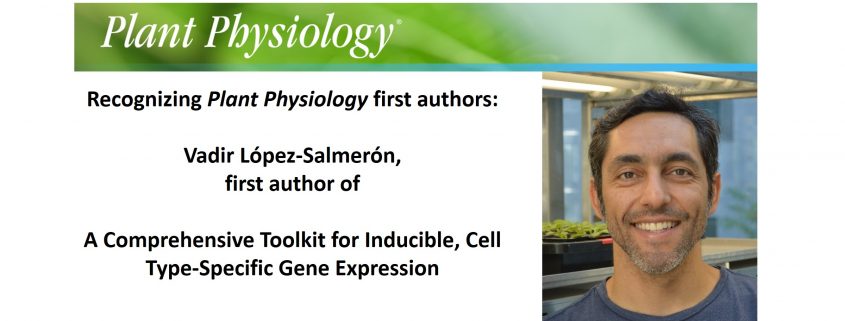Recognizing Plant Physiology first authors: Vadir López-Salmerón
Vadir López-Salmerón, co-first author of A Comprehensive Toolkit for Inducible, Cell Type-Specific Gene Expression in Arabidopsis
Current Position: Post-Doctoral Researcher, Developmental Physiology, Centre for Organismal Studies Heidelberg.
Education: PhD (2013) in Plant Molecular Biology at Centro Nacional de Biotecnología, Madrid – Spain. B.Sc. (2007) in Biology at Universidad Michoacana de San Nicolás de Hidalgo, Mexico.
Non-scientific Interests: Mountain biking, climbing, and whatever my kids want to do.
Brief bio: I started studying Mathematics at the university back in Mexico where I come from, but later I fell in love with Biology so I switched my studies to biology and earned my B.Sc. degree. Later, I moved to the CNB in Madrid, Spain, where I obtained my Master’s degree in Jose Ramon Naranjo’s lab working with Huntington disease using a murine model. After that, I decided to focus on plant research for my PhD. I joined Salome Prat´s lab where I studied the circadian clock and hypocotyl growth using Arabidopsis as a model plant. For my postdoc, I continued with plants and moved to Heidelberg to join Thomas Greb´s lab to start working in secondary growth, the production of wood. During secondary growth, cell proliferation and differentiation is driven by the cambium, the stem cell containing meristem responsible for lateral growth. However, how tissue production occurs in a highly polar manner and in coordination with surrounding tissues is hardly understood, mainly because this is technically challenging to access. In addition, if genes are involved in primary growth, it is difficult to dissect their function during secondary growth. Thus, to tackle our research questions we needed tools with which we can control gene expression with high spatio-temporal resolution. As this is a shared concern with other researchers in the plant community and due to the fantastic atmosphere at COS, we initiated a collaboration that led us generate this tool-set. I am also fortunate to have an amazing co-first-author Ann-Kathrin, and we hope these tools will help to produce many exciting results for the plant community.




